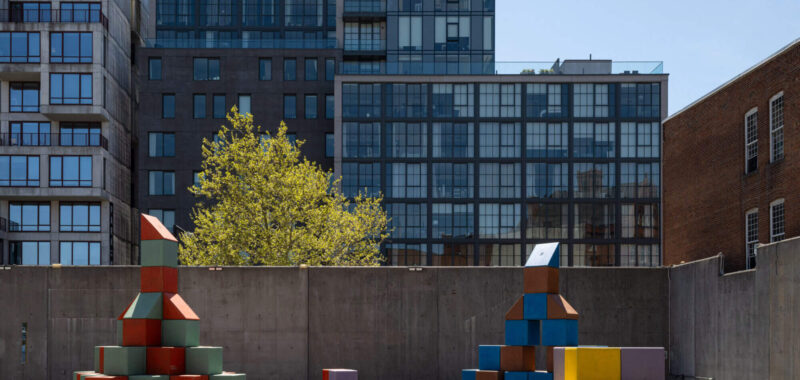“Le Grand Soir” is a French phrase that connotes “the big night” in English, but also the future—a better, egalitarian, revolutionary future—the Moroccan-French artist Yto Barrada told me on a crisp April afternoon in Long Island City, Queens. We were sitting in the MoMA PS1 courtyard observing her latest installation named after the euphemism, while a gaggle of children climbed up and down the polychromatic Brutalist structure.
“Le Grand Soir is this anarcho-syndicalist expression from the late 19th and early 20th centuries. It’s something that we yearn for,” she said, smiling. “It’s the big night that marks the end of social injustice and inequality, a beautiful expression that’s very popular in Moroccan literature and music.”
From the outside looking in, Barrada’s latest installation in the MoMA PS1 courtyard, Le Grand Soir, rises from the gravel like a late modernist playground, perhaps like something Aldo van Eyck would have designed for postwar Rotterdam. Platonic shapes (cubes and triangles) are stacked into pyramids and lacquered in secondary colors from the CIAM Grid (green, red, yellow, iris, and blue). The blocks have chamfered corners and edges to encourage young ones to play.
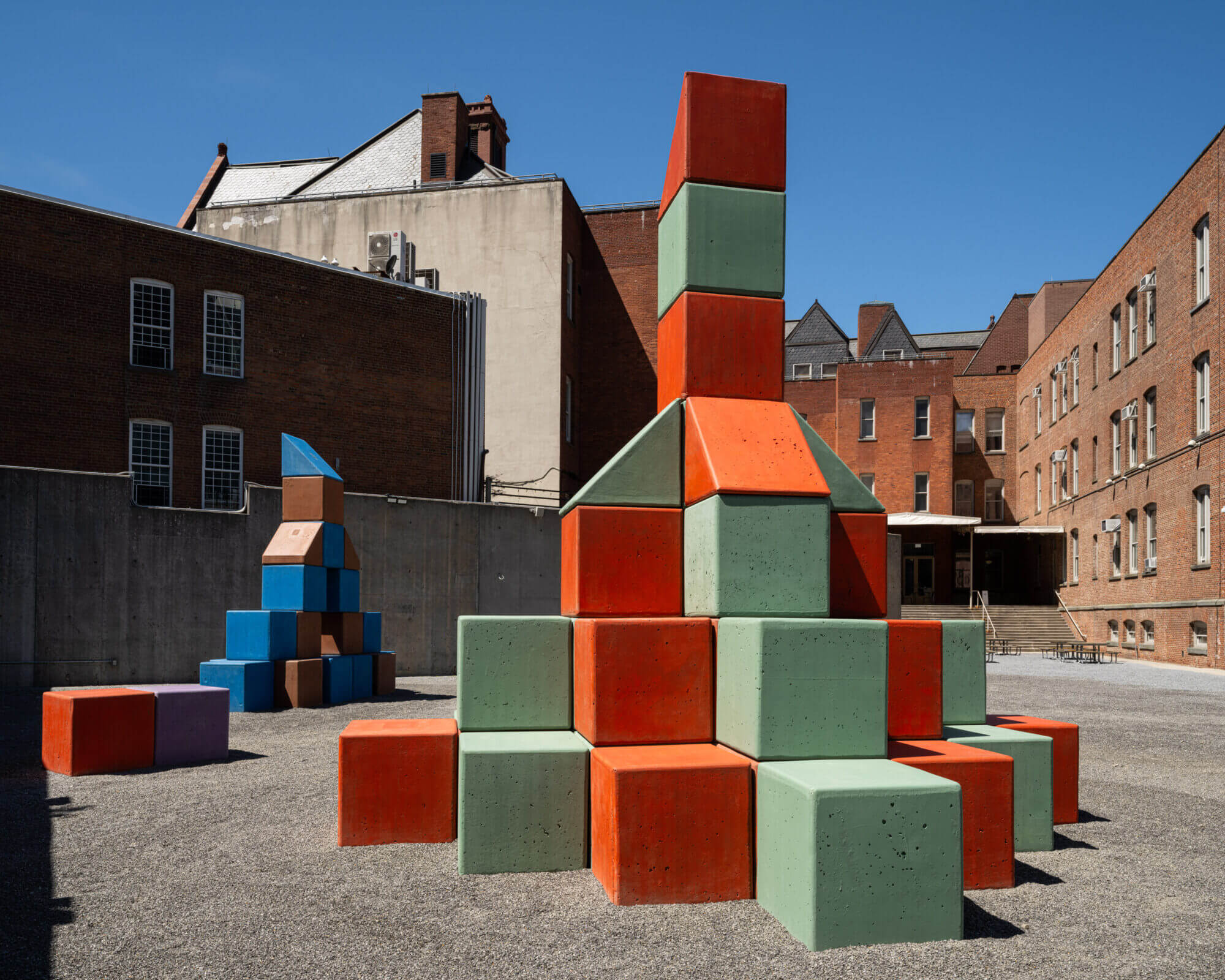
Individual cubes are engraved with Arabic words like “tqal” (weight), “bourj benayma ou chebaken” (tower lift with net), and “bourj tarbaite” (tower of four), phrases that evoke traditional Moroccan acrobatic formations. The result is a child friendly composition that also invites grownups to sprawl out in the sun. But upon closer inspection, and after speaking with Barrada about her own familial history, background, and ethos, one realizes it’s something else indeed—a manifesto made of concrete.
Yto Barrada has long been interested in creating space for adolescents. Her mother, Mounira, was a child psychotherapist and founder of Darna Association, a nonprofit that served Tangier street children. In 2004, Barrada published Fais un fils et jette-le à la mer featuring her heartfelt photography of children’s workshops from the Darna Association in Tangier and young immigrants in Marseille. Then in 2010, she created a board game for school children of the Darna Association that sought to explain continental shifts, and the Strait of Gibraltar more broadly, aptly called Tectonic Plate.
Barrada’s father, Hamid, is a journalist based in Paris. In 1963, Hamid was sentenced to death for his revolutionary activities as head of a socialist student union, UNEM. One day, during a brutal period in Moroccan history known as the “Years of Lead,” Hamid escaped prison and lept to freedom by jumping from rooftop to rooftop. “It’s a story he’s told me and my family hundreds of times,” Barrada said, “but not anyone else.” Hamid and Mounira later named their daughter after a book by Maurice Le Glay, Itto, which was popular amongst political prisoners. It tells the story of a young Berber girl who incarnates resistance to imperialism.
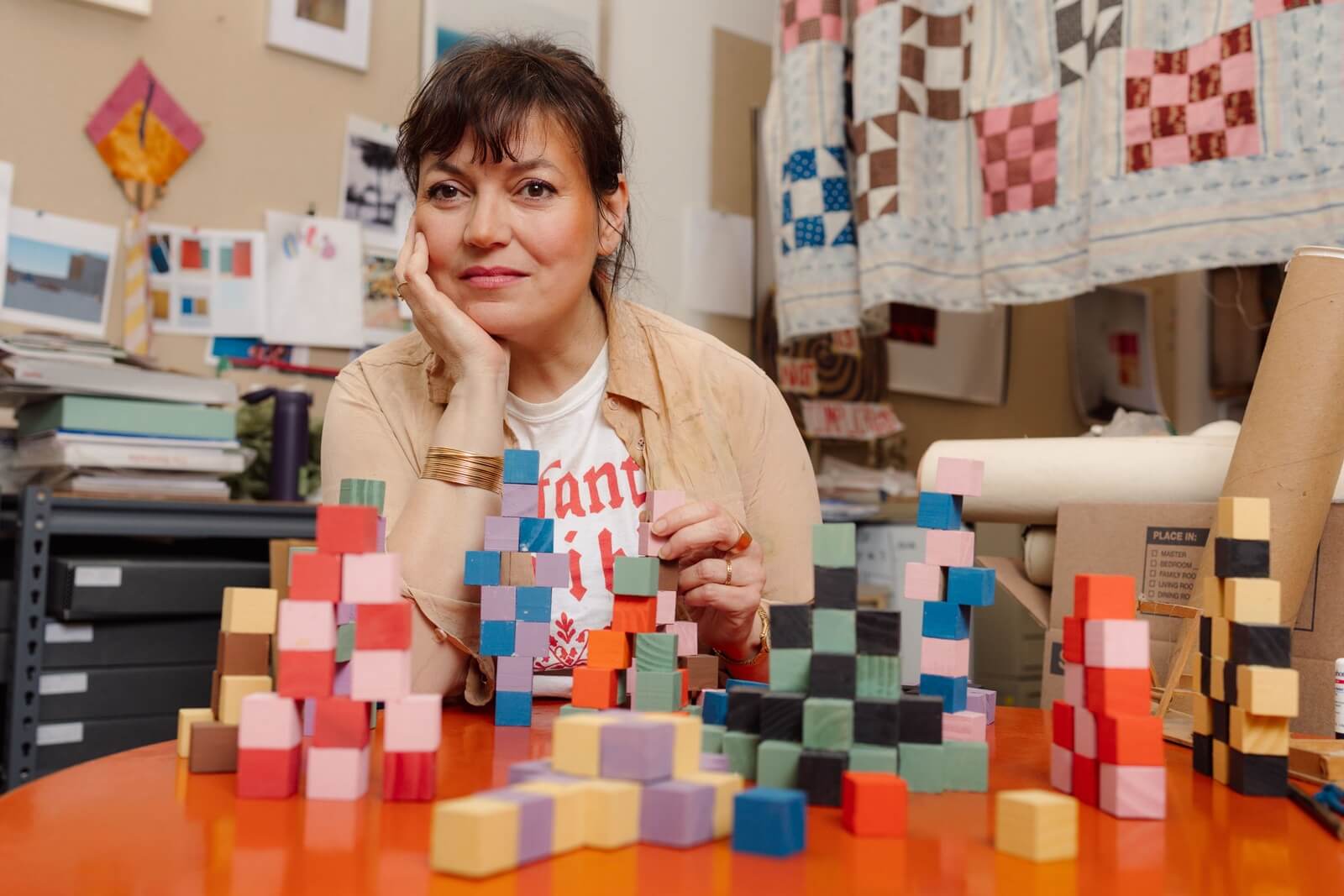
“I made a promise to my dad,” Barrada said. “He was jealous because I referenced my mom in so many previous works. So I eventually told him, ‘I’m putting you, whatever the subject is, in my next project.’ And I kept my word! That’s where the title comes from, Le Grand Soir. That’s for my dad.” Barrada told me that another good analogy for the pyramids on view at MoMA PS1 is the German expression Diebesleiter which translates to “thieves ladder,” the act of giving one’s hands to help your comrade over a wall.
Le Grand Soir is about Barrada’s father’s epic getaway, and the impotence and hubris of walls, and her mother’s commitment to social justice and children, among so many other things, she affirmed. It pays homage to her mother and father, but also the migrant Moroccan workers imported to France after World War II to help rebuild Europe. It’s also a nod to Brutalist architecture in Morocco built after the country achieved independence from France in 1956, namely The Group of Moroccan Modern Architects (GAMMA), but also Morocco’s long tradition of human pyramids and acrobatics. One walks away from it in awe of how many ideas can be baked into a few rudimentary cubes stacked atop one another.
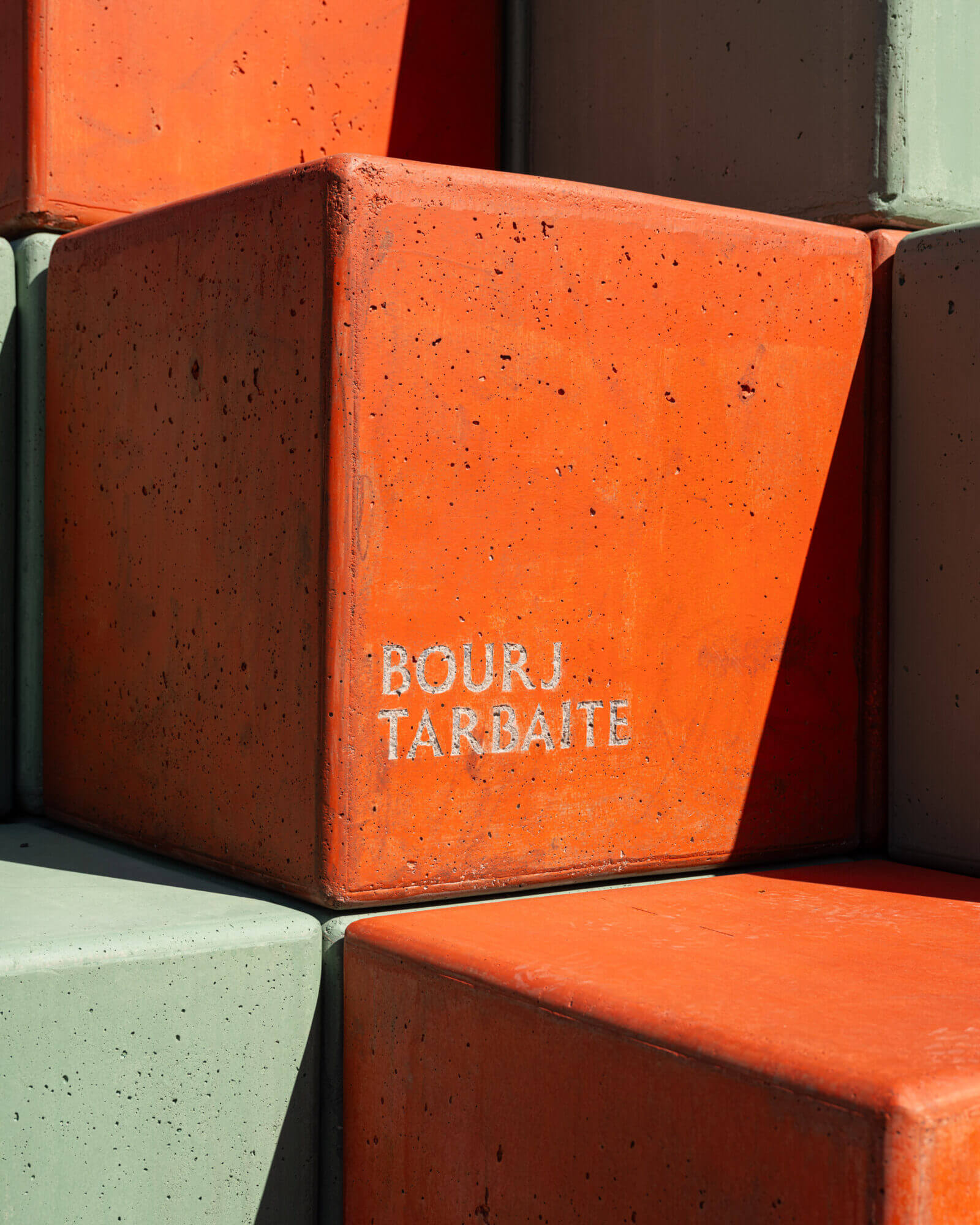
For centuries, Barrada tells me, “Moroccan warriors created human pyramids to peek over walls and surmount enemy forts.” Then overtime, thanks to Portugal’s colonization of northern Africa, Morocco’s longtime tradition of human pyramid building became an orientalist spectacle, to quote Edward Said. (In the early 1990s, Barrada made a portrait of Said, around the same time she was commissioned by a French daily newspaper, Libération, to photograph Yasser Arafat.) In the 19th and 20th centuries, Moroccan acrobat troupes were sent all over Europe and the U.S. to perform, including the 1939–40 New York World’s Fair in Flushing Meadows, Queens, not far from PS1.
At Le Grand Soir, multiple layers of context overlap to create architecture that’s pregnant with meaning and history. Its form directly takes cues from GAMMA, a group of Brutalist Moroccan architects led by Elie Azagury active in the 1960s and 1970s that today have largely been forgotten. GAMMA built much of the built environment after Morocco’s independence from France in 1956, including the reconstruction of Agadir after the horrific 1960 earthquake. Ideologically, GAMMA’s thinking wasn’t that far off from Peter and Alison Smithson and Team X, albeit different due to the fact they operated outside the imperial yoke. “These architects were interested in challenging the alleged universalism of modernity and Brutalism,” Barrada said, “while also reinventing Brutalism for postcolonial Morocco.”
Along her journey from photography and art into architecture and GAMMA, Barrada tells me she eventually crossed paths with the late Jean-Louis Cohen, a dear friend of hers who fastidiously studied Casablanca and French colonial influence in northern Africa. “Standing here in this courtyard today, I think about how Jean-Louis isn’t here,” she said. “He would have loved this, and immediately picked up on the artwork’s associations, I think.”
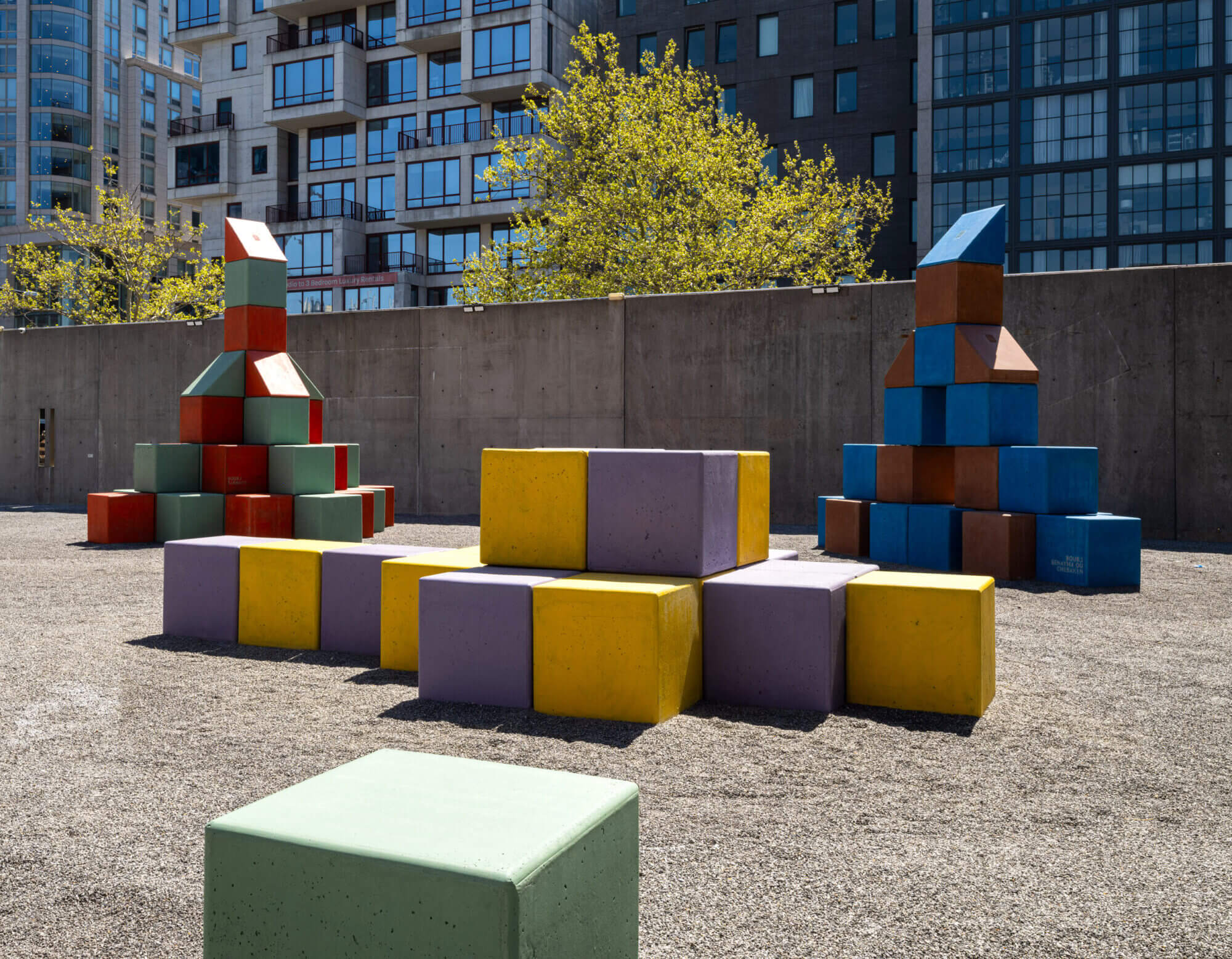
Winding down our rather peripatetic conversation, the contrast between Le Grand Soir’s revolutionary undertones and the ultra sleek luxury towers just beyond MoMA PS1’s courtyard became effervescent. In one space, a revolutionary future, and hypergentrification in another—two heterotopias battling it out to see who wins.
Thus, Le Grand Soir stands as an arbiter that reminds us all walls will fall: It recalls that old adage, “Show me a ten foot wall, and I’ll show you an eleven foot ladder!” At the same time, Barrada’s latest work also manifests the “big night,” when high-rise luxury towers for the rich perform better, more humane (dare I say socialist) functions, like schools, public housing, and children’s clinics. And who knows: maybe even playgrounds. “In total I did twenty studies. On view in the courtyard is only five,” Barrada said. “In the future I want to build more.”
Le Grand Soir is on view at MoMA PS1 through 2026. It was organized by Ruba Katrib, MoMA PS1’s curator and director of cultural affairs; and Jody Graf, assistant curator. Stronghold Industries was responsible for fabricating each cube.

